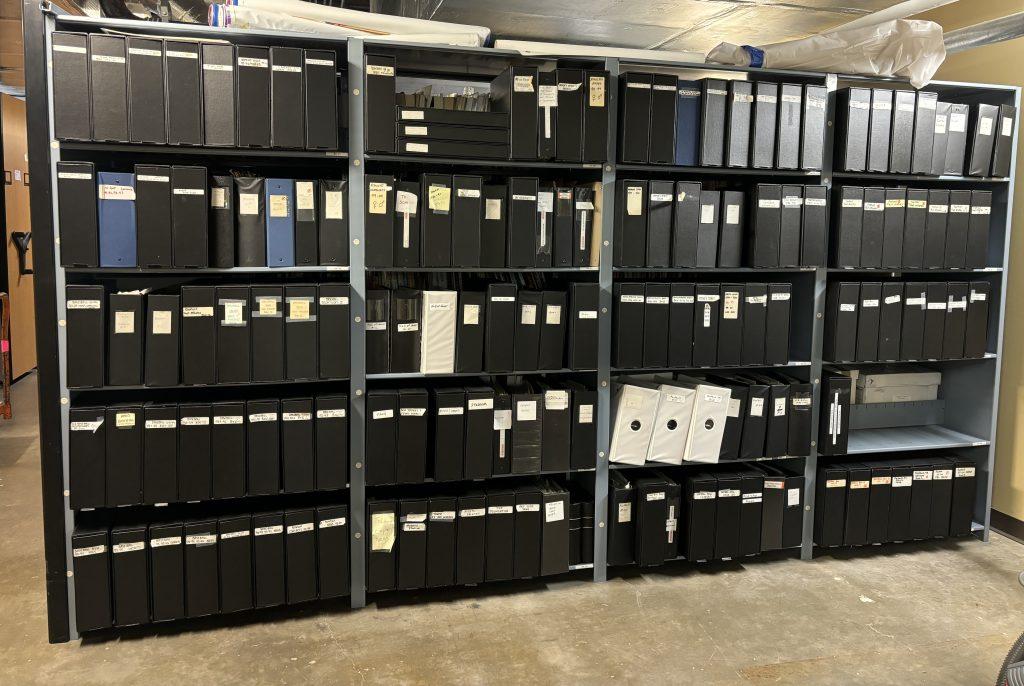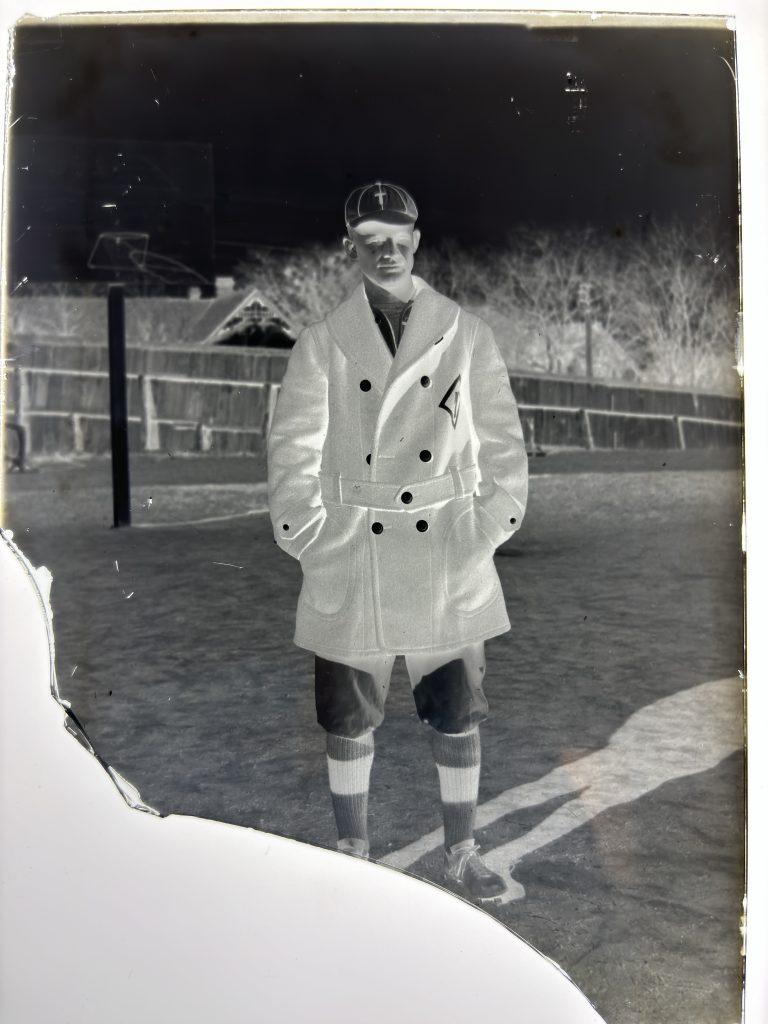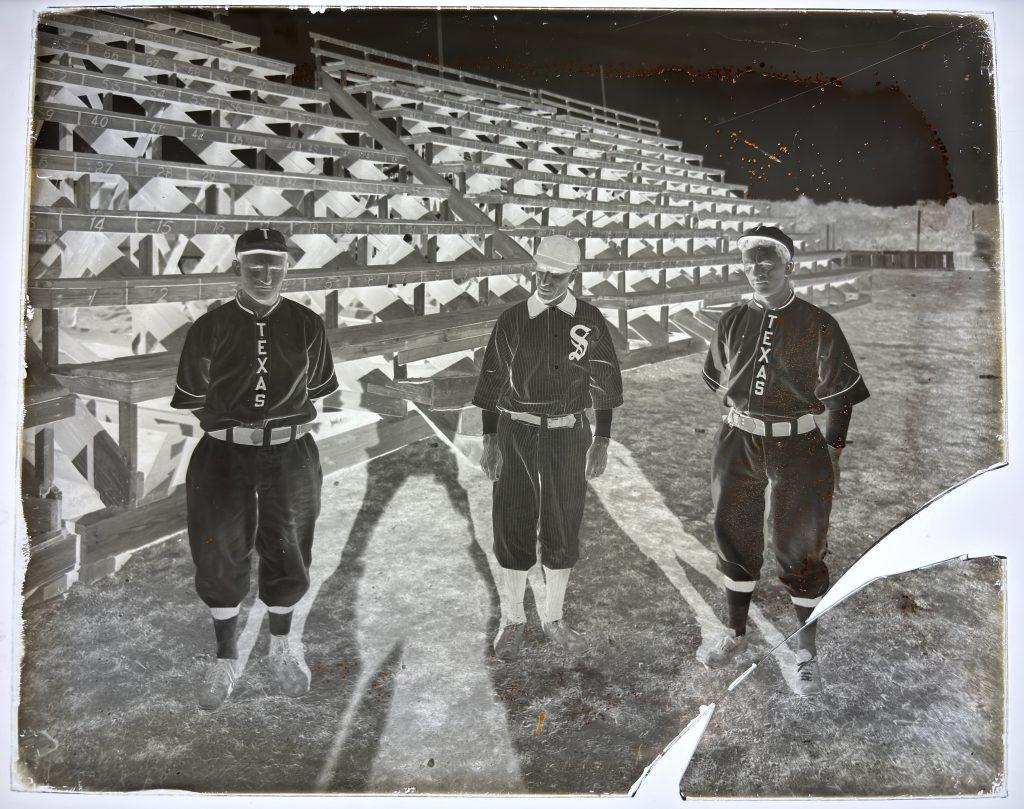When I first began at the Stark, I heard tales told of binders assembled by Susan (former Director of Photography for Athletics) and Jim Sigmon (former Assistant AD for New Media) that contained the history of hard copy photos for the University of Texas Athletics programs before photography went digital with the evolution of DSLR cameras. The rumors were confirmed by a former staff member who actually remembered the exact location of the photo binders. He took us on a walkabout late one Friday afternoon and remembered the door they hid behind which was, unfortunately, locked. No one had been in that windowless room, really more like a big storage closet, for a very long time. In fact, no one knew who had the key or when the door was even last opened. Many of the assistant coaches and staff that worked on that hall hadn’t even known it existed, even though they passed by it every day. The collection was hidden in plain view.
The mystery deepened…
After several phone calls, the key was finally located, and we spent most of the day bringing the hundreds and hundreds of binders that housed hard copy photographs, negatives and boxes from the late 1900s to the early 2000s down to the Stark. The Stark Center became the repository for the UT Athletics Photo Collection. I previously made mention of this in my blog Double Exposure: The Artistic Legacy of Two UT Athletics Photography Duos. Hidden within some of the binders were glass plates!



One of the greatest treasures in the collection were the glass plates, and they were actually positives, not negatives, of early 20th century UT athletes. Even though I’ve learned quite a bit about digitization since I’ve been at the Stark, I haven’t had any experience with glass positives. Many of them are over 100 years old and are so terribly fragile. Many had been damaged over the years, left jagged and cracked. I wanted very much to know who these young men were but with positives, it’s impossible to discern hardly anything. So, in their protected case they sat. And they sat. And they sat some more while I pondered how to release the images trapped in the glass.

Over the past year, I’ve tried to research how to bring these athletes to life. I dug deep on historical photographic websites. I engaged our digital archivist, and she researched a bit. Our new archivist reached out to her colleagues to see what experience they had. Then there began a series of trial and errors. First, there were pennies beneath the corners on a scanner. Then there were white papers beneath to try to lighten the positives. There were several other ways, suggested by photographic aficionados, all of which ended in failure. The glass plates sat some more. I’m not going to lie; I did get a little obsessed about these glass plates. I really wanted to identify who these young heroes of yesteryear were.



Then, it finally happened…Dr. Kim Beckwith, our assistant director, off-handedly suggested putting them on the light table, taking a photo with my iPhone, throwing the image into photoshop, and hitting the ‘invert’ button. I carefully placed the first glass plate on my light table, took the photo with my iPhone on the high-resolution setting, cropped it down to the image, sent it to my desktop, then put it into photoshop. We both nervously awaited the result after I hit the ‘invert’ button and BA-BAM! Tilly Anderson, catcher for the 1915 Longhorn baseball squad in his brand-new varsity peacoat, lit up my screen. Some of the glass positives needed to be carefully reconstructed like jigsaw puzzles to capture the images. After I inverted dozens of glass negatives of football players, baseball players, and tennis players, I scoured yearbooks, rosters and records to identify these young Longhorns in the now clearly visible photographs.
After completing this project, which became a labor of love really, the glass positives got placed in their new home—archival photo boxes—to protect and preserve these historic images, thanks to the knowledge and caring of our archivist, Caroline Jones.
Special thanks to UT Athletics for the privilege and trust they placed in the Stark to preserve and care for these historic glass positives.
















Leave a Reply